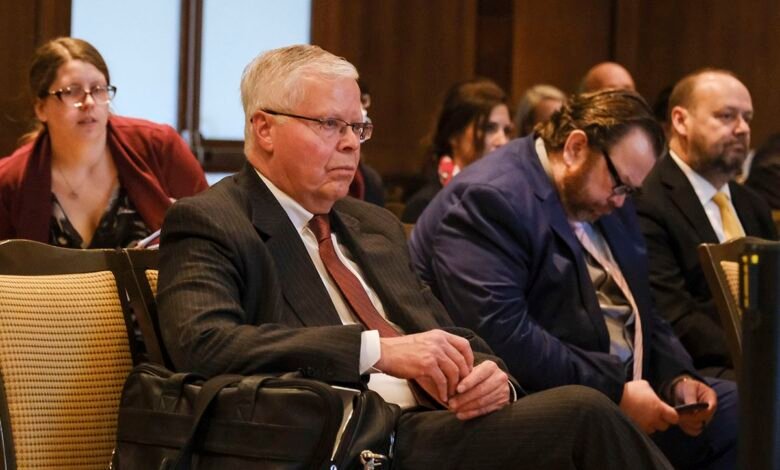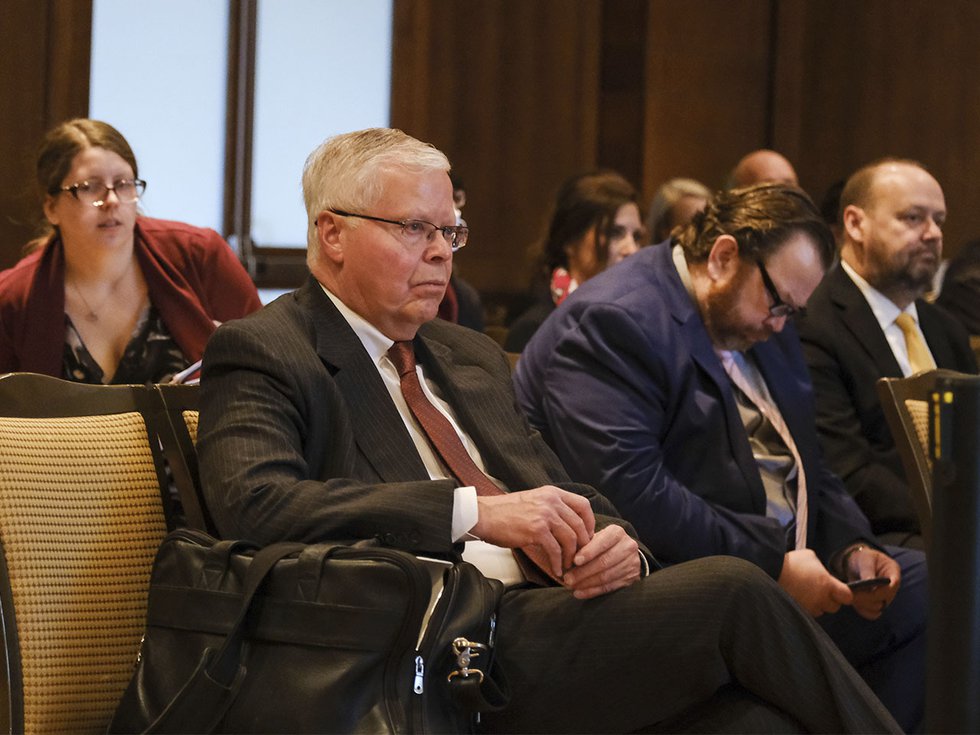UW System internal briefing recommends downsizing remaining branch campuses – Isthmus


The UW System hopes to downsize its remaining branch campuses amid declining student interest in associate degrees and ongoing enrollment struggles, according to an October briefing by UW System President Jay Rothman Isthmus obtained via records request.
Five campuses have already been targeted for closure or a transition from in-person learning — UW-Platteville Richland will be completely vacated by July 1, while UW-Oshkosh Fond du Lac, UW-Milwaukee Washington County, UW-Green Bay Marinette and UW-Milwaukee Waukesha are all slated for closure or a transition to online-only classes. But the briefing, first sent to branch campus chancellors on Sept. 19, recommends that the UW System reduce the physical footprints of the remaining eight campuses and negotiate contractual exits where appropriate.
The UW System comprises three levels of universities: two flagship research universities, UW-Madison and UW-Milwaukee, 11 comprehensive universities offering bachelor’s and graduate degrees and 13 branch campuses, offering associate and bachelor’s degrees. The branch campuses, though located elsewhere, are embedded in a nearby four-year university and operate under the jurisdiction of that university’s chancellor.
The branch campuses are funded through a hybrid model: the counties hosting the campuses pay for the land and facilities, while the UW System covers operational costs.
“Negotiate New Agreements with All Other Counties,” reads the title of one slide included in the briefing. “Will seek to reduce space allocations/footprints, repurpose facilities, negotiate exits where appropriate, and address any other concerns.”
The briefing does note that “maintaining a presence at the existing campus location is the preferred option,” though that would be “subject to a reduction of total square footage under lease and renegotiation of the terms of existing [memorandums of agreement].” Tailoring new dual-enrollment programs with high schools or working with local businesses on employment training opportunities was also recommended for many of the still-intact campuses.
The briefing also suggests a broader shift away from the UW System offering associate degrees, noting that the UW System’s mission is “as a four-year/graduate degree provider.” They advise the UW System to emphasize bachelor’s degrees and transfer potential for students and to eliminate “two-year” nomenclature surrounding the branch campuses; they note, additionally, that the Wisconsin Technical College System has the ability to offer “liberal arts associate degrees.” The branch campuses’ struggles come as fewer students earned an associate degree in 2022-23 than any year in the past decade, according to an April report from the National Student Clearinghouse.
Mark Pitsch, media relations director for UW System, emphasizes in an email that these recommendations are not a done deal. “These are point-in-time briefing documents during an ongoing evaluation of our branch campuses and don’t reflect final decisions,” he writes. “In the decision-making process, a range of options are explored and a variety of stakeholders are consulted. When final decisions are made they are announced publicly.”
Though making cuts or downsizing could help the UW System recoup costs, the briefing acknowledges that any changes to branch campuses and their contracts might cause tension with counties. “Counties may demand funding for MOA cancellation or facility repurposing,” one bullet point in the briefing reads. Another bullet point: “Counties may simply refuse to participate, jeopardizing future viability of remaining branch campuses.”
The branch campuses’ challenges accelerate “inevitable” memorandum of agreement and lease negotiations, according to the briefing. Some of the leases with counties expire between 2040-2044, while others are indefinite, according to the briefing. The UW System’s decision to vacate the UW-Platteville at Richland campus by July angered some county officials, with Richland County Administrator Candace Pesch saying in an April statement that it creates a “potential economic crisis” for the county and that the UW System was “shirking their responsibilities.” Pesch did not respond to a request for comment.
Involving multiple parties in educational structures and funding, as the UW System does with the counties, can be a complex affair, says Roger Schonfeld, vice president of libraries, scholarly communication and museums at Ithaka S+R, an education-focused nonprofit that provides research and resources to educators. Schonfeld and another researcher, Jane Radecki, authored an August 2021 report for Ithaka S+R on the 2017-18 consolidation of the former UW College system into the system’s four-year institutions.
Though he said he could not speak specifically to Wisconsin’s current branch campus struggles, Schonfeld says “there have been cases where the desire to create more coordination across two- and four-year institutions can be really challenging.”
Shifting student demographics has been a concern for both the branch campuses and comprehensive campuses, particularly as the UW System’s state funding challenges exacerbate a need for revenue from higher enrollments. In the last year, its universities have reduced their debt through budget cuts, but the UW System still reported being $17.4 million in debt at a June 6 Board of Regents meeting. The UW System has pointed to “market realities,” like drops in enrollment, as a justification for the branch campus closures. In an October statement, Rothman said the decisions were motivated by enrollment drops, not cost cutting measures, and charged chancellors with branch campuses to find a sustainable path for their respective campuses.
While UW-Green Bay Manitowoc, UW-Platteville Baraboo Sauk County, UW-Eau Claire Barron and UW-Whitewater Rock County experienced enrollment increases for fall 2023, all other branch campuses saw dips in enrollment. Some drops were modest — UW-Green Bay Sheboygan went from 440 students in 2022 to 435 in 2023 — while others were more severe. UW-Stevens Point Marshfield, for example, went from 344 students in fall 2022 to 283 in fall 2023, a nearly 18% drop in enrollment.
Even more dramatic: Student enrollment at UW-Oshkosh Fox Cities dropped from 1,115 students in 2018 to 497 in 2022.
“The demographic pattern is sort of facing what some people call a demographic cliff, for purposes of higher education, which is to say that the traditional age population has declined nationally,” Schonfeld says. He adds that demographic changes vary by region, but that broadly, many public and private institutions are enrolling fewer 18-22-year-old students.
Schonfeld says the demographic cliff did not come as a surprise: “You can tell 18 years in advance what’s going to happen,” he says. As such, many institutions nationally have targeted nontraditional student populations to think broadly about filling higher education needs without necessarily targeting the declining 18-22 year old student population, Schonfeld says.
Costs for an already cash-strapped UW System are a driving factor against maintaining the branch campuses in their current state. The briefing mentions that “branch campus student costs [are] higher than main campuses” and that gains in two-year degree interest are “improbable.”
But eliminating the campuses erases a potential economic draw — students and employees who study or work at the campuses — for the counties that host them. Legislators have taken action to soften the financial blow: Gov. Tony Evers signed a bill in April to release up to $20 million — up to $2 million per county — for counties affected by branch campus closures. Evers and the Wisconsin Economic Development Corporation requested in May that the Legislature’s Joint Finance Committee release the funds in the latest in a series of ongoing disputes with Republican committee members over held-up funds. The money has still not been released.
The branch campuses have undergone sizable structural shifts in the last decade, owing to enrollment and financial struggles similar to the ones they now face. In November 2017, UW System President Ray Cross proposed restructuring the campuses — then known as UW Colleges, which existed under a central chancellorship and spread-out administrative teams — into the four-year campuses. The Board of Regents approved the measure. Some critics at the time found the decision to be rushed and a sign of “poor leadership.”
Faculty and students have levied similar transparency-related criticisms toward the UW System’s current branch campus strategy. However, Schonfeld says that going public with a decision to consolidate, rather than announcing that a university system is considering consolidating, “seemed to be a key success factor” in the 2017-18 consolidation efforts.
“Declining demographics, particularly in rural Wisconsin at the time, set up a different kind of dynamic which was really more about ‘how do we cut?,’ rather than ‘how do we grow?,’” Schonfeld says.
The 2017-18 branch campus consolidation aimed to bring the UW System in line with Wisconsin’s shifting public higher education demographics and needs. But the commensurate enrollments didn’t come: total branch campus enrollment more than halved from 2018 to 2023, with 9,741 students attending in fall 2018 compared to an estimated 4,803 in fall 2023.
“Supply and demand for higher education have to be matched with one another,” Schonfeld says. Institutions have pursued a number of different approaches to bolster enrollment, he adds: building new dormitories to attract out of state students, realigning programs to “make them more valuable” and aligned with student and workforce needs, and merging institutions, which can reduce overhead and may lead to shrinking programs or their costs. Many of those suggestions are reflected in the UW System’s briefing.
Still, if enrollments or revenues do not see gains, the consequences can be dire. It remains to be seen how that will pan out for the branch campuses and the UW System itself.
“You also reach a point where, if you haven’t generated those new enrollments, those new revenues from somewhere else, a system can find itself in a place where there’s a bit of a downward spiral,” Schonfeld says. “I’m not here to say that that’s what happened in Wisconsin because I haven’t followed it closely enough. But certainly that’s a risk, that’s something that can happen. That’s a reason to try to take action early rather than late, though, again, the political impediments to doing so can be real.”’
[Editor’s note: This story was updated to reflect that while the UW System released two similar briefings to Isthmus in response to an open records request, this story reports on one.]
